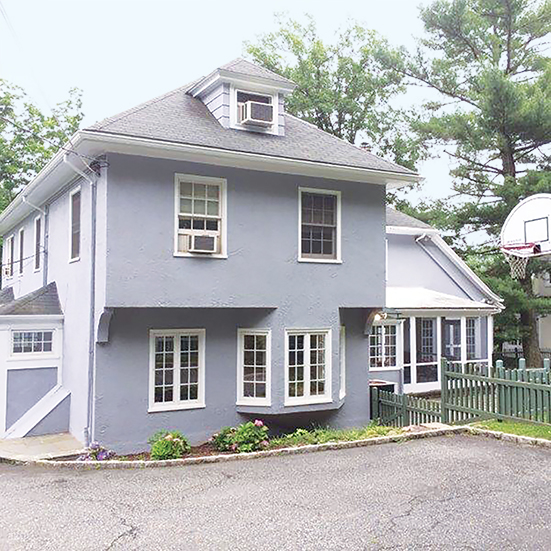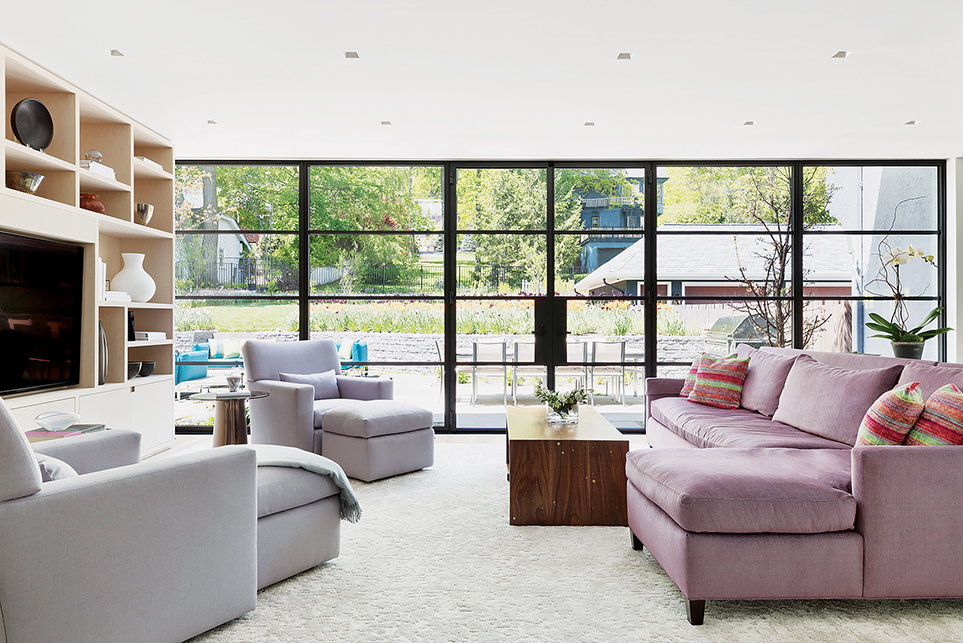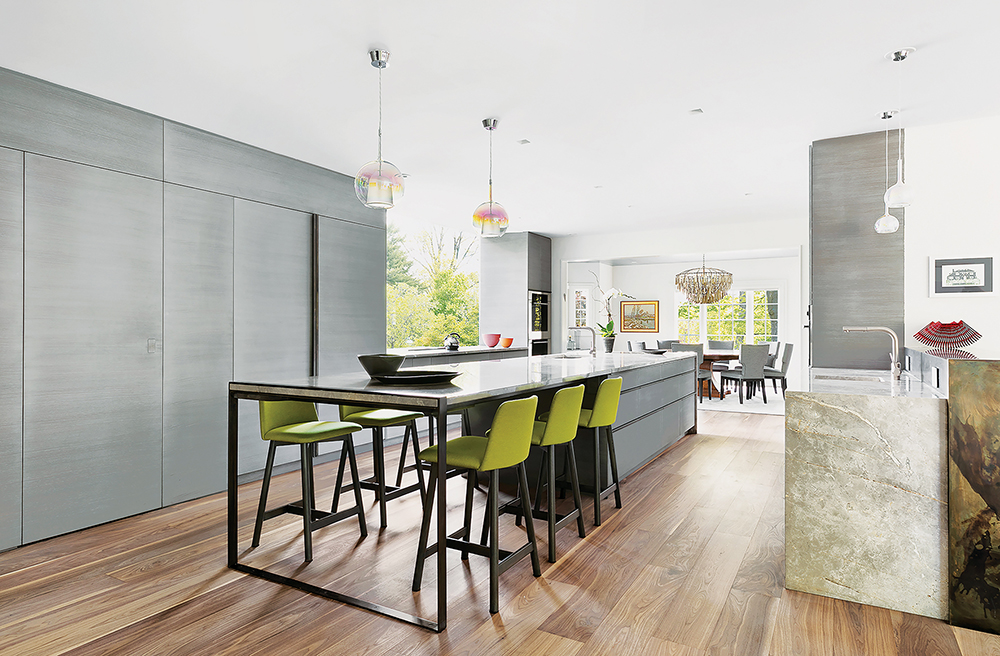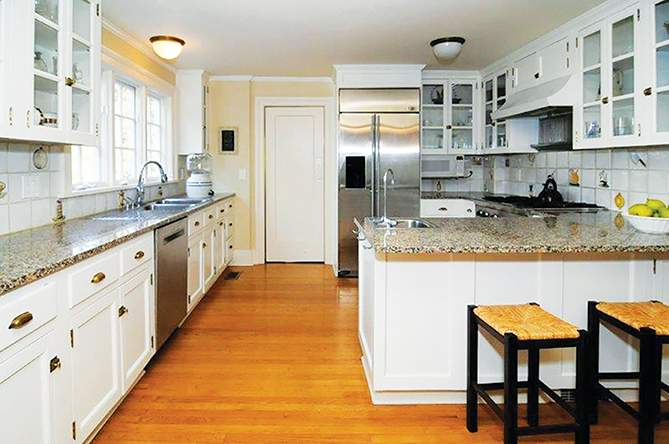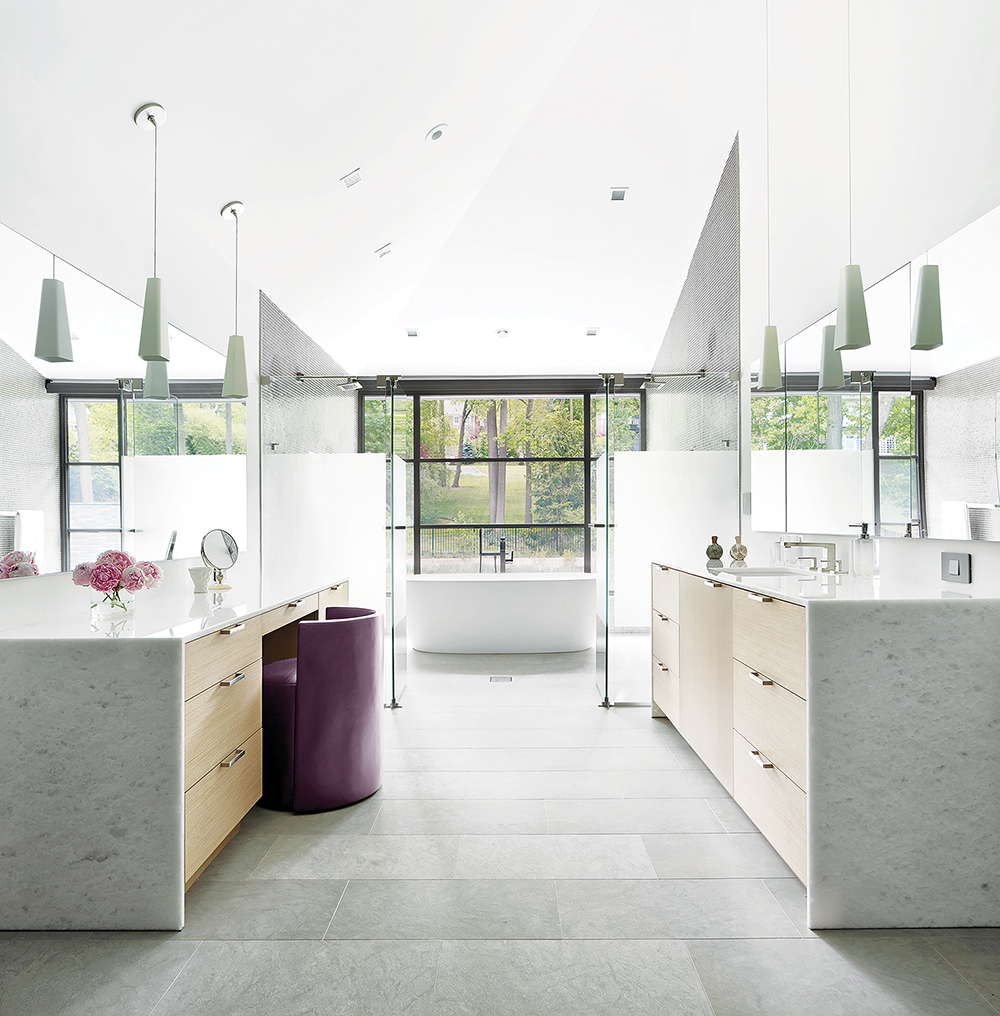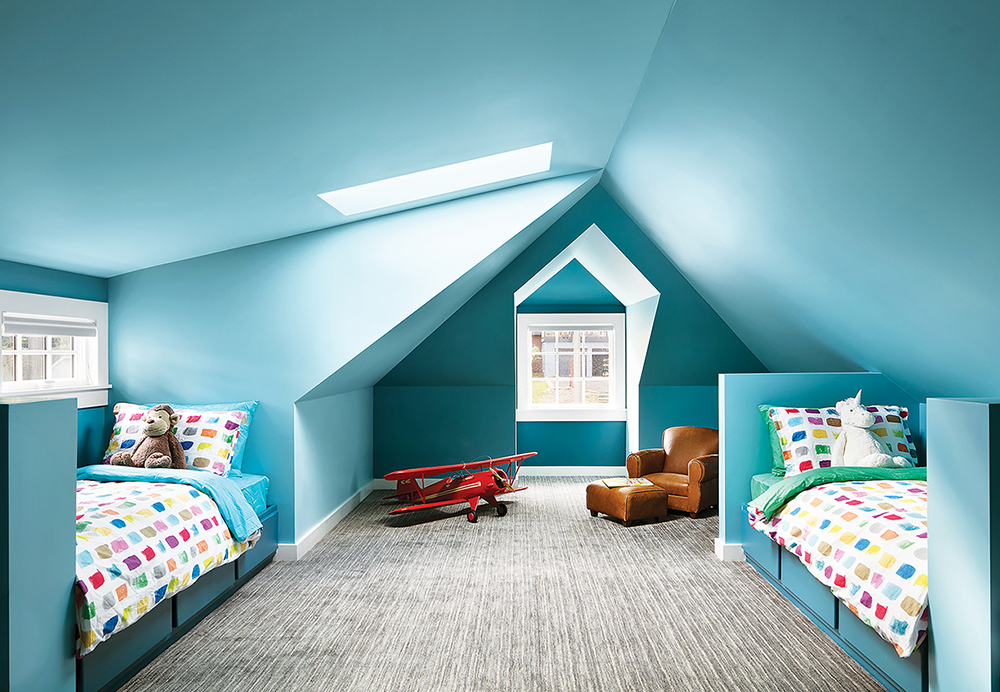Contemporary Cottage
Writer Marirose Krall | Photographer Donna Dotan | Designer RHG A+D | Architect RHG A+D | Location Essex County, NJ | Landscapers Back to Nature |A vintage home gets a modern remodel
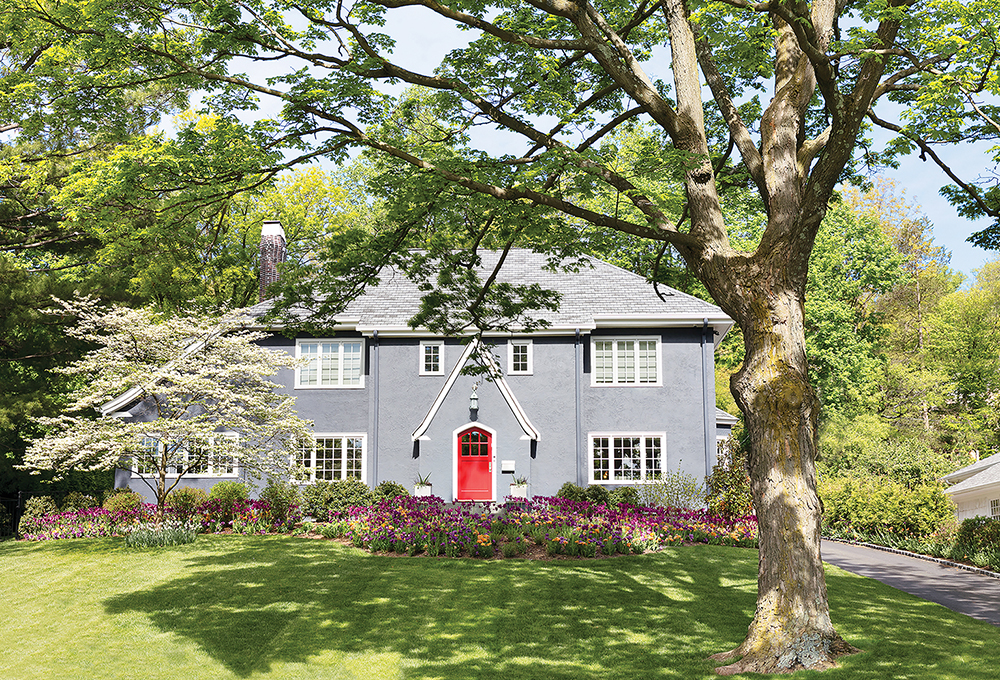
FRONT | The architect retained the street façade to pay homage to the home’s English Cottage style. Orange and purple tulips add color to complement the stately structure.
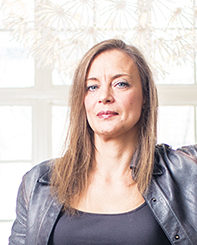 Rachael Grochowski, RA, NCARB
Rachael Grochowski, RA, NCARB
RHG A+D
Montclair, New Jersey
973-707-2081 | rhdesign.com
It’s not unusual for new empty nesters to take stock of their lives, reevaluating wants and needs, likes and dislikes. So it was for the couple who purchased this Essex County home. “They were ready to make a pivotal transition,” says Rachael Grochowski, RA, NCARB, and principal of RHG A+D, an architecture and interior design firm in Montclair, New Jersey. The couple wanted a “modern, handcrafted space with an open floor plan,” Grochowski says. That posed an interesting challenge because the residence, built in 1927, possesses a vintage charm reflective of its early-20th-century provenance. To create a sophisticated, contemporary retreat without compromising the aesthetics of the property, Grochowski retained the street-side façade and then focused on reinventing the interiors and rear façade.
Design NJ: What is the architectural style of this home?
Rachael Grochowski: It is English Cottage style. Hallmarks include asymmetry, a stucco exterior, an arched entry door in a front-facing gable, small-paned casement-style windows and a slight curve of the roofline.
DNJ: What were the owners looking for in the renovated home?
Grochowski: The clients wanted a more modern aesthetic than what they had in their previous home, which was Colonial style with Colonial detailing. The interiors were decorated with antiques.
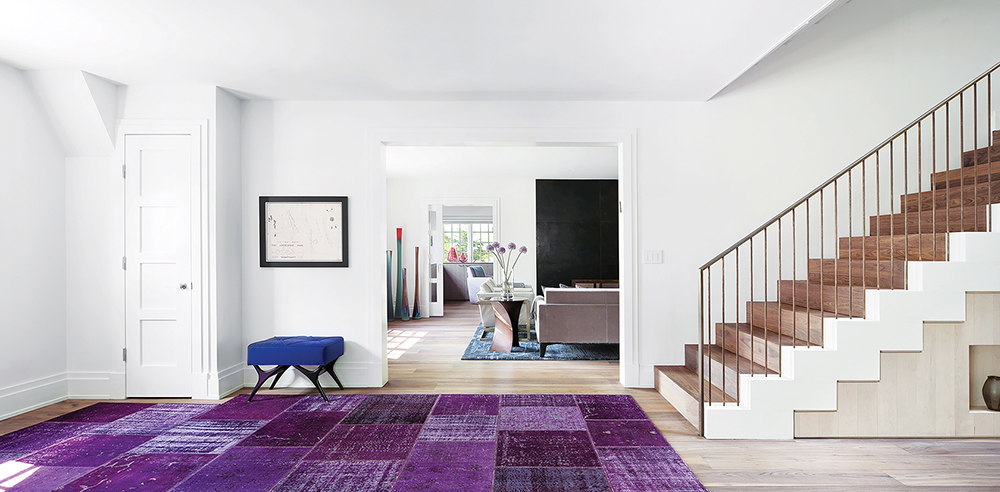
STAIRCASE | The staircase was designed as a sculptural piece, with built-in niches for display.
DNJ: What did the renovation entail?
Grochowski: The house was gutted to the studs and we removed a single-story sunroom off the back of the house. We established a floor plan that met both the aesthetic of the English Cottage-style, street-front façade and the more modern open plan at the back of the house. A two-story (plus basement) addition on the back comprises a family room on the first floor and much of the master suite on the second floor. There was extensive landscaping work along the front of the house. That necessitated our reworking the front entry to create a more significant sense of arrival. At the rear of the home, we added terracing, a patio, a pool and custom-designed fencing to transform the site.
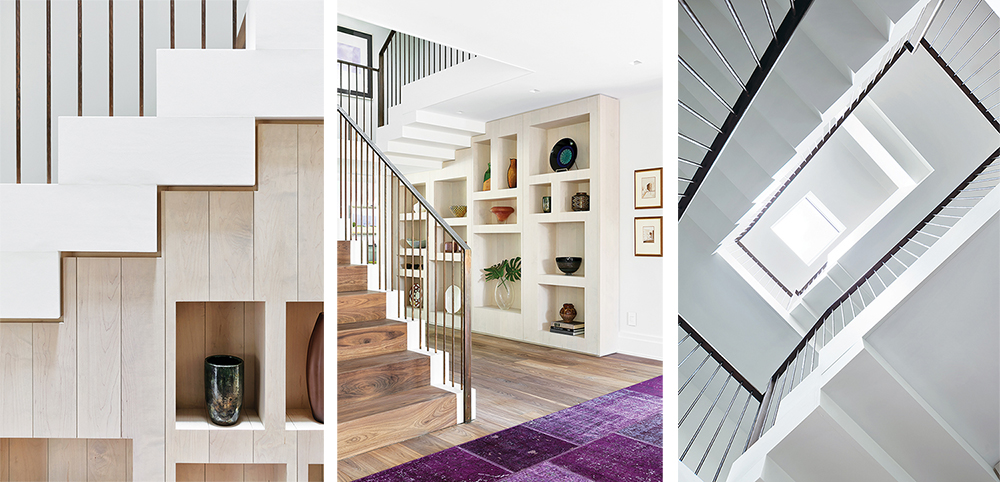
BUILT IN | Matching millwork fits snugly onto the wall on the other side of the hallway. LOOKING UP | The perspective from the bottom of the staircase underscores its “Escher”-like design.
DNJ: How did the floor plan change?
Grochowski: The size of the rooms at the front of the house (living room, sunroom [now library] and dining room) remained the same, but the character and detailing changed. The back wall of the living room was removed to connect with the new addition. The center hall was opened up to allow a view all the way through the house and to create room for built-in millwork on each side of the hall. The center stair was custom designed to fit in the same location as the original staircase, but now continues all the way up to the third floor and ends with a skylight. The cantilevered staircase has walnut risers and treads plus a white strip painted along the edge, which together mimic the look of a runner. The effect creates the look of steps both on the tread and on the underside of the stair. We also created a handmade rail and posts using hammered steel in an antiqued bronze color so they have a hand-molded look and a custom patina. An expansive kitchen was established starting with the original kitchen and extending to the back to meet the addition. It was important to flood the kitchen with light, which we achieved with the minimalist detailed window at the cooktop.
DNJ: What steps did you take to ensure a smooth transition from the traditional exterior to the more modern interior?
Grochowski: This house has a relationship to the Glasgow School of Arts (completed in 1909) and homes designed by Charles Rennie Mackintosh. These works were about total design and expressed ideas that led to modern architecture. The style was also influenced by the Arts and Crafts movement, continuing with handmade details and furnishings, but in a more authentic, unadorned incarnation. With this historical reference, I had a place to begin. My focus became creating the handmade feel, the craftsman aesthetic, not as a style but as a philosophy. This was achieved by using authentic materials such as walnut floors with a lye stain, steel with a natural or light patina finish, and bleached maple entry and living room millwork. Equally important was working with the craftspeople and fabricators who could execute the details as envisioned and adjust per their trade wisdom. These pieces are not just built-ins but also furniture pieces throughout the house.
DNJ: What were the challenges of this project? How did you address them?
Grochowski: The scope of the project required intense focus. We played a role every step of the way, from architecture to accessories. This renovation involved a high level of design and numerous custom elements—from the metal detailing of the kitchen table and bar to the intricate staircase. It was a lengthy, meticulous process to ensure the details would be successful. Each corner, every surface and how they related to each other were considered. We dedicated the staff required to be sure we stayed on schedule. When we launched into the interior design, we approached the task as an extension of the home’s architectural details and materiality. Then we worked to continue the clean modern design with a slightly softer edge. We selected materials, fixtures, lighting paint, etc., as well as furniture, fabrics, accessories—even down to linens, barware and kitchen outfitting. We were honored to be granted this level of trust from our clients and are extremely proud of the results.


